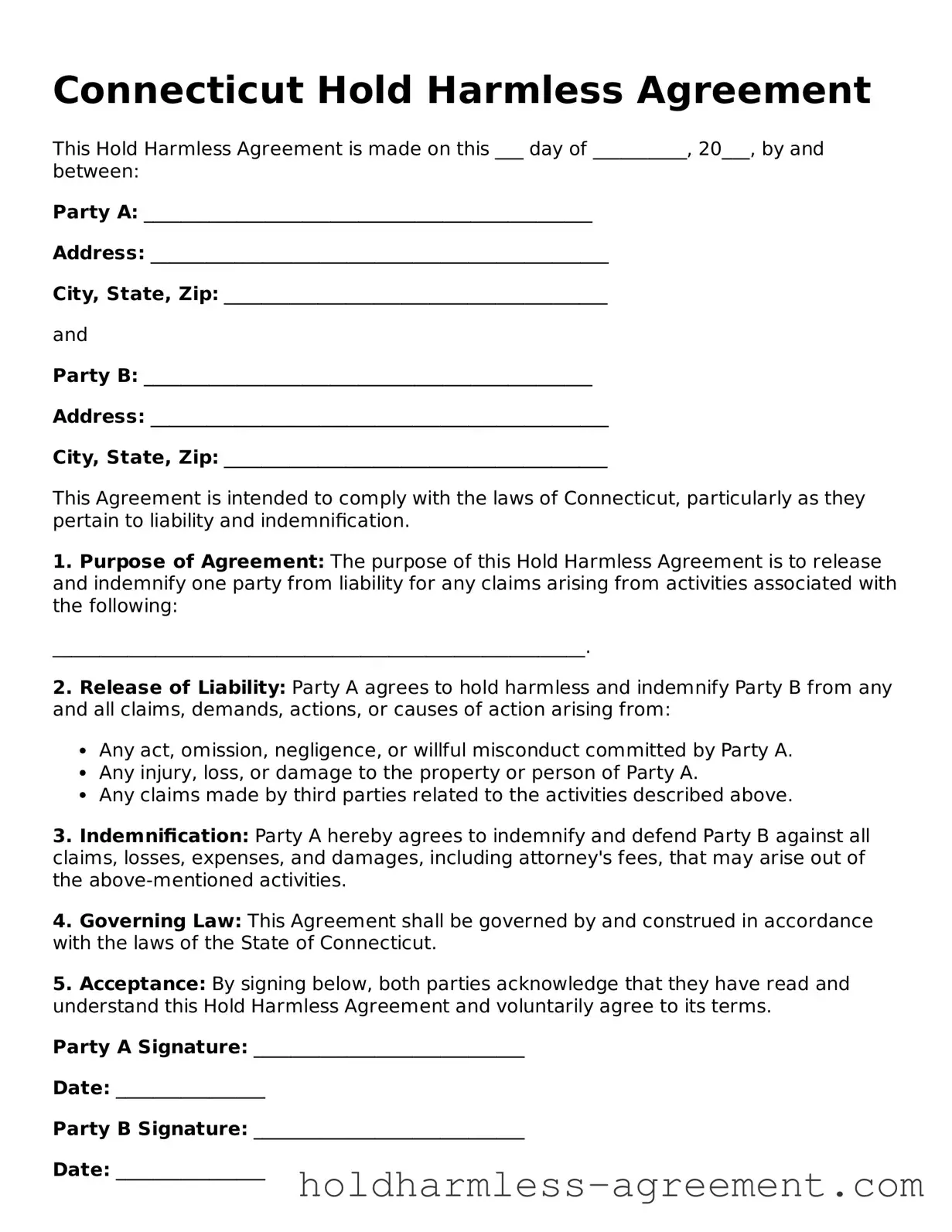What is a Hold Harmless Agreement?
A Hold Harmless Agreement is a legal document that protects one party from liability or claims that may arise from a specific activity or event. In Connecticut, this agreement is often used in various situations, such as events, construction projects, or rental agreements, to ensure that one party does not hold the other responsible for any injuries or damages that may occur.
Why should I use a Hold Harmless Agreement?
This agreement is beneficial for both parties involved. It helps clarify responsibilities and reduces the risk of legal disputes. By signing this agreement, you acknowledge the risks associated with the activity and agree not to hold the other party liable for any resulting damages or injuries.
Who needs to sign the Hold Harmless Agreement?
Typically, the parties involved in the activity or event need to sign the agreement. This can include individuals, organizations, or businesses. Anyone who may be at risk of liability should be a signatory to ensure comprehensive protection.
What should be included in a Hold Harmless Agreement?
A well-drafted Hold Harmless Agreement should include the following elements:
-
The names and contact information of all parties involved.
-
A clear description of the activity or event covered by the agreement.
-
The specific liabilities being waived.
-
Any limitations or exclusions of liability.
-
The duration of the agreement.
-
Signatures of all parties and the date of signing.
Is a Hold Harmless Agreement legally binding in Connecticut?
Yes, a Hold Harmless Agreement is legally binding in Connecticut, provided it is properly drafted and signed by all parties involved. However, it is important to ensure that the language used is clear and unambiguous to avoid any potential disputes regarding its enforceability.
Can I modify a Hold Harmless Agreement?
Yes, you can modify a Hold Harmless Agreement. Any changes should be made in writing and signed by all parties involved. This ensures that everyone is aware of and agrees to the new terms, maintaining the legal integrity of the agreement.
What happens if someone gets injured despite the Hold Harmless Agreement?
If an injury occurs, the Hold Harmless Agreement may protect the party that is not at fault. However, the effectiveness of the agreement can depend on the specific circumstances and the language used in the document. It is advisable to consult a legal professional to understand the implications fully.
Do I need a lawyer to create a Hold Harmless Agreement?
While it is possible to create a Hold Harmless Agreement without a lawyer, it is highly recommended to seek legal advice. A lawyer can help ensure that the agreement is comprehensive, legally sound, and tailored to your specific needs, reducing the risk of future disputes.
You can find Hold Harmless Agreement forms online, through legal document services, or by consulting a lawyer. Ensure that any form you use complies with Connecticut laws and is appropriate for your specific situation.
